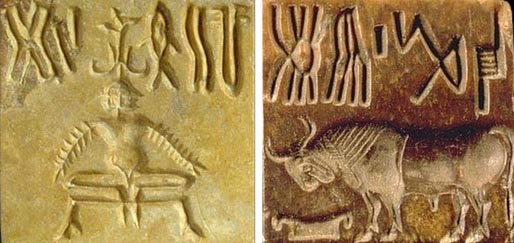AI found meaning in the hieroglyphs of 4000 years ago
The most powerful ancient Indian civilization in its development was not inferior to Mesopotamia and Egypt, however, unlike them, it left almost no written artifacts. All its linguistic heritage is about 1500 semi-erased inscriptions on fragments of dishes, dated between 2600 and 1900. BC. This language cannot be deciphered at all, because the longest inscription fragment is only 27 characters.

For more than a century, archaeologists have unsuccessfully fought over the mystery of the ancient Indian language. Found its similarity with many other languages, including Old Slavic. As a result, after many years of unsuccessful attempts, it was practically decided that the inscriptions in fact are not text, but simply separate symbols of political and religious content - this is one of the scientific works that prove this thesis. They say that the Indians of that time may not have had any written language at all.
')
However, Indian programmers, specialists in artificial intelligence, who created a special program for searching linguistic structures in historical inscriptions, turned out to be fundamentally disagree. Before work, the system was trained in three verbal languages (modern English, Sanskrit, Sumerian) and three non-verbal communication systems (human DNA, Fortran, bacteria proteins).
The system has determined the level of structuredness of each of the languages. If non-verbal communication systems are at different ends of the scale of the level of repeatability (that is, either too well structured or close to chaotic), then verbal languages are somewhere in the middle.
Then the program was launched on the ancient Indian material. Computer analysis with a high degree of reliability proved the presence in the drawings of just such a percentage of repeatability patterns, which is characteristic of verbal languages. The analysis was performed according to the Markov model .
The results of their work, scientists have published in the article "Entropic Evidence for Linguistic Structure in the Indus Script" (journal Science, Vol. 324 Issue 5926, April 24, 2009).
However, the meaning of the inscriptions AI, of course, could not clarify. And it is hardly possible, at least theoretically, due to too much fragmentation of the fragments. The only hope is that a significant resemblance will be found with any of the already deciphered ancient languages.
via Wired

For more than a century, archaeologists have unsuccessfully fought over the mystery of the ancient Indian language. Found its similarity with many other languages, including Old Slavic. As a result, after many years of unsuccessful attempts, it was practically decided that the inscriptions in fact are not text, but simply separate symbols of political and religious content - this is one of the scientific works that prove this thesis. They say that the Indians of that time may not have had any written language at all.
')
However, Indian programmers, specialists in artificial intelligence, who created a special program for searching linguistic structures in historical inscriptions, turned out to be fundamentally disagree. Before work, the system was trained in three verbal languages (modern English, Sanskrit, Sumerian) and three non-verbal communication systems (human DNA, Fortran, bacteria proteins).
The system has determined the level of structuredness of each of the languages. If non-verbal communication systems are at different ends of the scale of the level of repeatability (that is, either too well structured or close to chaotic), then verbal languages are somewhere in the middle.
Then the program was launched on the ancient Indian material. Computer analysis with a high degree of reliability proved the presence in the drawings of just such a percentage of repeatability patterns, which is characteristic of verbal languages. The analysis was performed according to the Markov model .
The results of their work, scientists have published in the article "Entropic Evidence for Linguistic Structure in the Indus Script" (journal Science, Vol. 324 Issue 5926, April 24, 2009).
However, the meaning of the inscriptions AI, of course, could not clarify. And it is hardly possible, at least theoretically, due to too much fragmentation of the fragments. The only hope is that a significant resemblance will be found with any of the already deciphered ancient languages.
via Wired
Source: https://habr.com/ru/post/58195/
All Articles